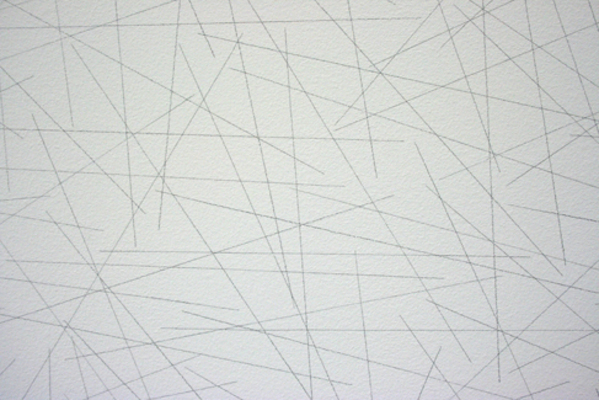
Description
In 1970, Sol LeWitt further distilled the formal vocabulary he used in his wall drawings. Whereas bands of parallel lines characterized his earlier graphite wall drawings, he later began to isolate the single line as a basic conveyance for his ideas. Additionally, LeWitt relaxed the requirement of applying lines in only the four absolute directions, fostering new relationships between his verbal instructions, the performance of those instructions, and the surface on which those instructions are performed.
Noteworthy in Wall Drawing 86 is the disparity between the simplicity of the instructions and the seeming chaos they produce on the wall. The number of lines drawn here is derived from a traditional Eastern concept that ten thousand is a unit emblematic of all inconceivably large numbers. Lines are applied at the singular discretion of the draftsman, who is instructed only to maintain the length of the lines and appearance of evenness across the surface of the wall. The even distribution is conditioned by the dimensions of the wall, giving each iteration of the drawing a different level of density. Other aspects of the lines (their orientation, how often they intersect each other, etc.) are decided by the draftsman as the drawing progresses. The operation of restriction and flexibility results in a visual marriage between pattern and intuition.
Details
- Work Date:
- June 1971
- Medium:
- Black pencil
- Credit Line:
- Private collection